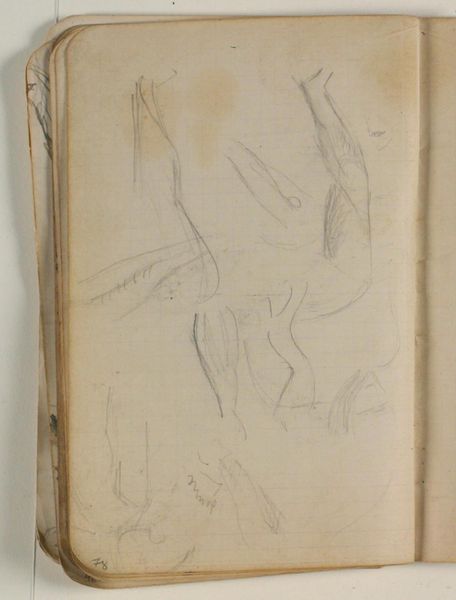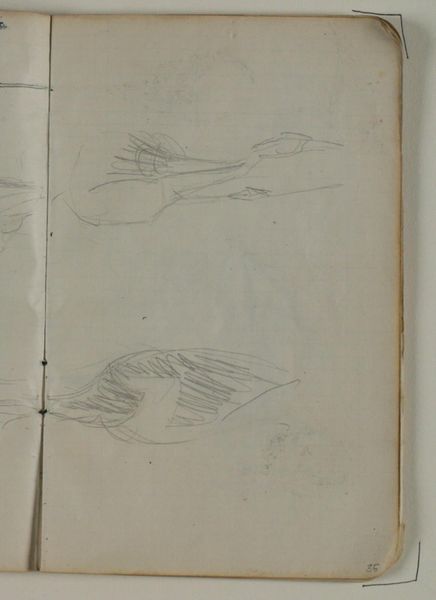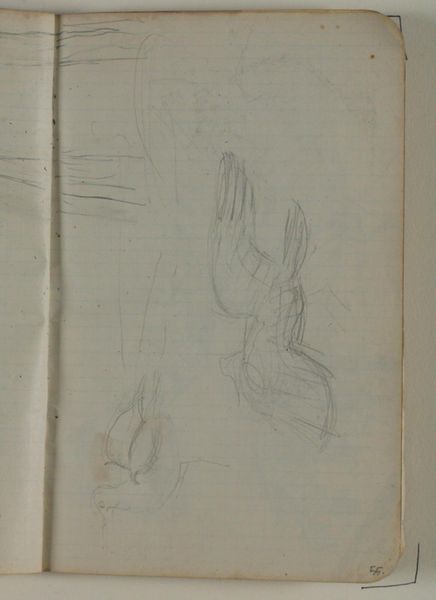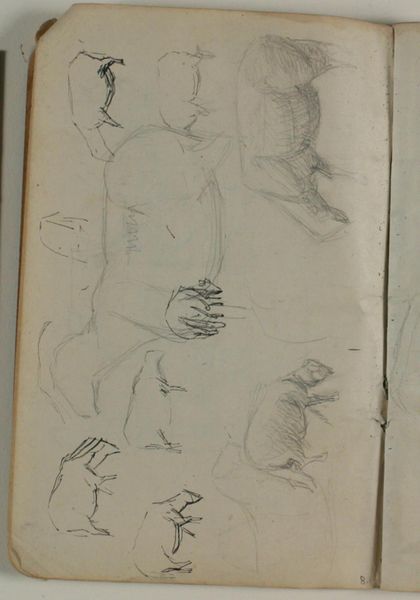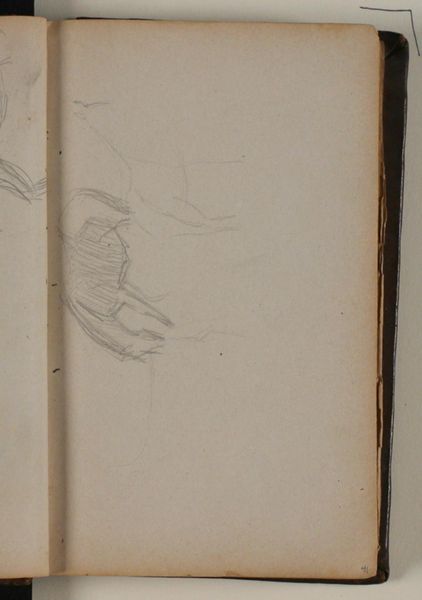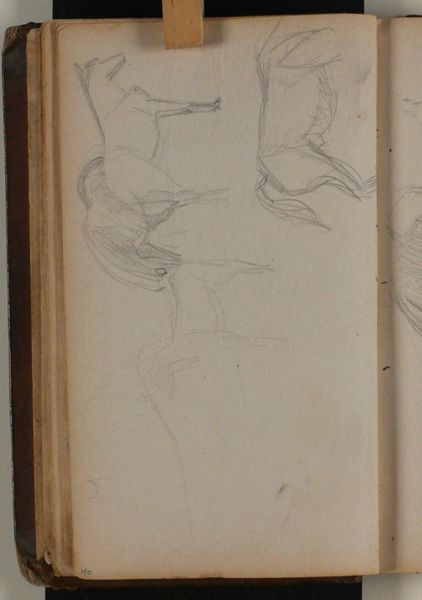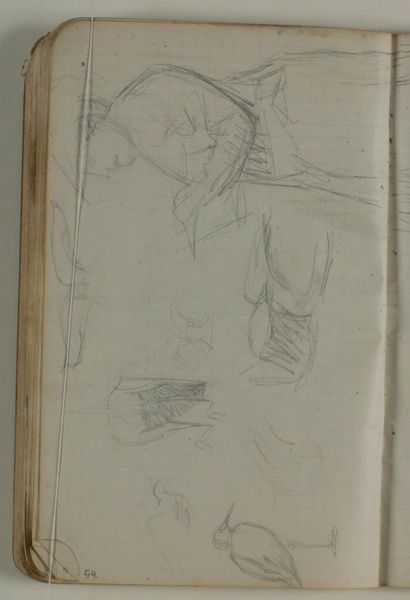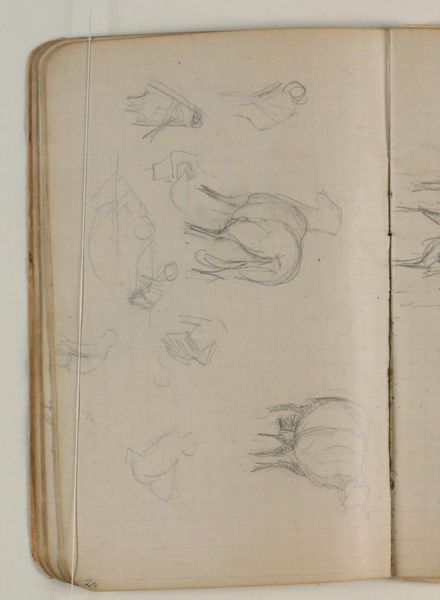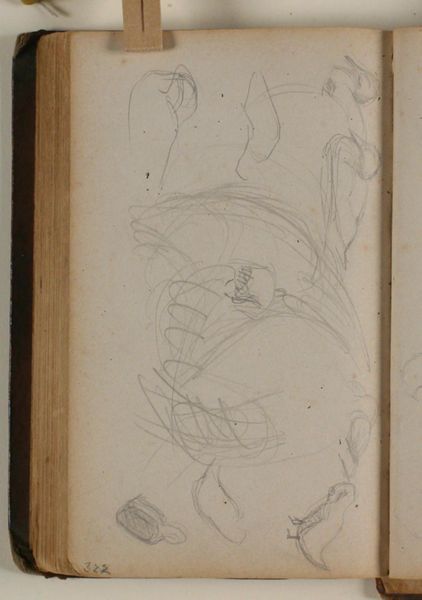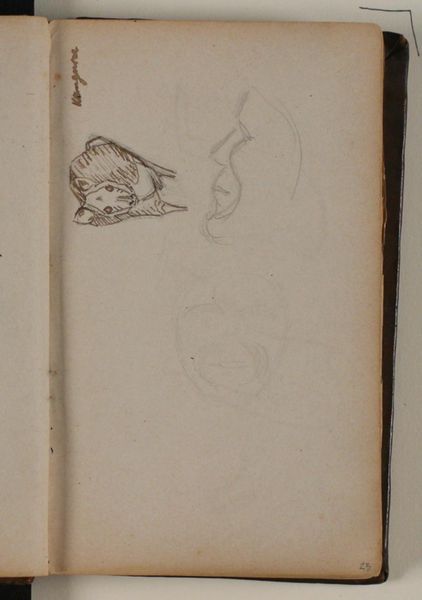
Dimensions: 175 mm (height) x 110 mm (width) (bladmaal)
Curator: Here we have Niels Larsen Stevns’ "Skitser af køer og fugle" – Sketches of Cows and Birds – dating from around 1900-1905. The medium is pencil on paper. Editor: The lightness is striking! There's a fragile quality to the wispy lines, almost like memories fading on the page. The lack of firm definition actually lends a certain ethereal beauty. Curator: The quick, almost shorthand style provides a fascinating glimpse into Stevns’ process. His rural background undoubtedly informed his observational skills, offering an interesting intersection between agrarian life and artistic representation in early 20th-century Denmark. We need to situate his work in a tradition of land artists examining labor divisions along gender and age lines. Editor: Yes, and considering his other landscape paintings, it's fascinating how he uses simple pencil strokes to convey the essence of these animals and their surroundings. It’s more about capturing the impression, the movement, the sheer presence than about realistic depiction. Consider the structural integrity, a web of graphite lines giving weight to the sketch in question. Curator: Exactly. His social consciousness may have prompted this approach, given the realities of farm work and how artistic representations, historically, excluded working populations and otherized vulnerable figures. Editor: But is it actually clear, though, that those lines have those sorts of cultural or political contexts inscribed upon them? The quick, repetitive strokes, however, seem key—they create an illusion of volume and movement, don’t you think? Curator: Well, that assumes Stevns worked in a social and cultural vacuum, unaffected by early 20th-century anxieties! To extract an artist from such discourses—and flatten art into some apolitical play with formal lines and geometries— is antithetical to my intellectual project! Editor: Okay, but can we at least agree that these simple forms allow our imagination to engage, inviting us to consider the inherent artistic intention to play around the forms themselves? Curator: Yes. By emphasizing that his sketching style gives access into a past where agricultural settings structured many workers’ lived realities, we allow a greater appreciation for his compositional techniques and social intent. Editor: Okay, I guess we each got what we needed. Curator: Exactly. Now viewers can ponder how their unique social lens influences their interpretations.
Comments
No comments
Be the first to comment and join the conversation on the ultimate creative platform.
